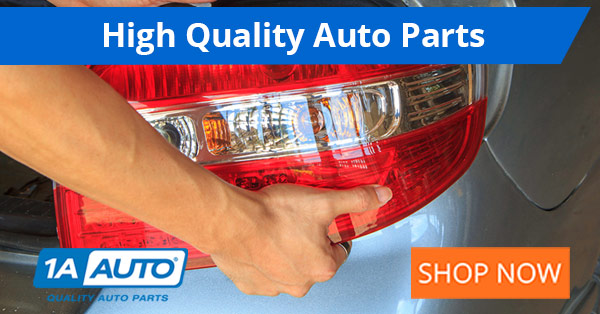What Type of Headlights Do I Have
Different Types of Headlights
Did you know that for the 42 years between 1941 and 1983, sealed beam headlights were required on all vehicles in the United States, with only four styles allowed? Imagine what modern cars and trucks would look like if they all shared the same headlights.
Before 1984, headlamps were easy to replace with a Phillips screwdriver. They were inexpensive to buy and easily found in every single auto part store in America. These days, for the sake of styling and improved visibility, lighting up the darkness has become a bit more complex. "Headlights" don't even have a standard name. They can be called "headlights" (without the space), "head lights" (two words), headlamps, or head lamps. Today there are different types, such as halogen, xenon, and HID headlights. Let's discuss the different types of headlights.
What Are Sealed Beam Headlights?
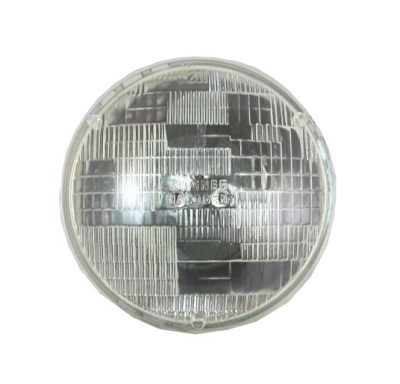
Sealed beam headlights are one-piece designs with glass lenses. The bulb, the lens, and the housing are all connected and cannot be separated without destroying the light itself. If the bulb burns out, the whole headlamp needs to be replaced. There were only two sizes of sealed beam lights available between 1940 and 1978, which were the round 5.75 inch and 7 inch style. To make vehicles look good when they all used the exact same lighting, many manufacturers had headlamp covers. The Camaro RS/SS and Buick Riviera are two great examples of this.
By 1978, rectangle headlights were finally permitted, and many car manufacturers rejoiced. The really big win, though, was in 1983. It was then that the Federal Motor Vehicle Safety team fully removed the entire sealed beam rule, and allowed plastic lenses and replaceable light bulbs. This meant that car and truck manufacturers could finally design the headlights to "flow" with the styling of the vehicle itself and not hide them behind plastic covers.
What Are Composite/Halogen Headlights?
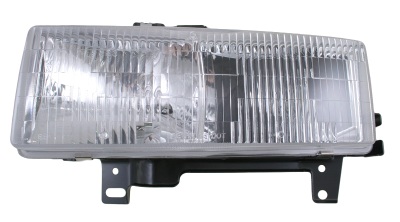
Composite lights came right after the sealed beam headlight. They have replaceable bulbs, which are filled with halogen gas. For this reason, many people call these lights "halogen headlights." The vast majority of them have plastic lenses, though there are a few exceptions here and there.
Pros and Cons of Composite/Halogen Headlights
Composite or halogen headlights have the ability to incorporate turn signals and even fog lamps into their design. This really gives the car and truck designers a blank canvas to work with and makes for great looking vehicles.
A con of this type of headlight is that the plastic lenses eventually turn yellow or fall off completely. Both can be embarrassing and won't get you a passing inspection sticker. When it comes to yellow or sandblasted headlight lenses, some drivers like to try the magic headlight cleaners, and that's because some of these products do actually work. The problem is that none (that we have encountered) will last for more than a couple months at the very most, and that won't help you see the road at night.
What Are HID/Xenon Headlights?
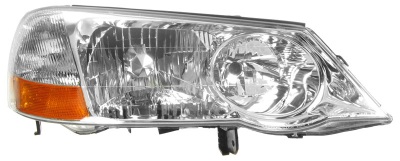
HID is an acronym for "high intensity discharge." The HID bulbs contain xenon gas. This is why these two terms have become interchangeable over the last several years. HID and xenon lights are the same kind of headlight. Back in 1991, the European spec BMW 7-series was the first factory vehicle to come with HIDs, and they were a game changer.
Pros and Cons of HID/Xenon Headlights
The HID bulbs lasted two to three times longer than the halogen bulbs, they draw less power, they are brighter, and they look great. The HID headlight system is slightly more complicated than a halogen headlamp because HIDs require a "ballast" to control the power flow to the bulb itself. The downfall of these is price. Replacing a factory HID headlight can be twice the price of the halogen version, and they are not interchangeable without modifications. There are also more areas for failure because there are more components than in a non-HID headlight. These types of headlights are also blinding to oncoming traffic if not aimed properly, which would obviously attract unpleasant hand gestures as well.
What Are Projector Headlights?
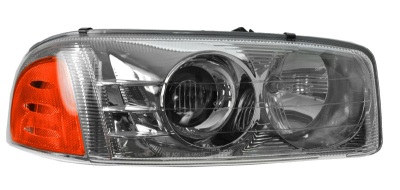
Halogen and HID versions of projector headlights both exist depending on the vehicle. This style of headlamp has a metal shield in front of the headlight bulb that actually helps focus the light in a specific direction with the help of a special lens inside the headlight housing. The metal light shield actually moves down to allow the full light from the bulb when the high beam switch is activated. As you can imagine, these lights are high end, and their price reflects it. Also, with additional moving parts, there is more opportunity for things to go wrong.
What Are LED Headlights?
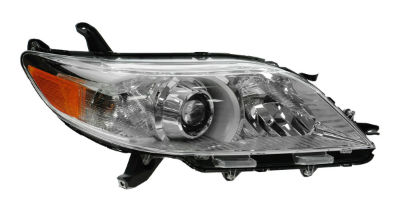
LED headlights are another new and improved headlight technology. They use Light Emitting Diodes instead of gas and filament bulbs to make light. These LEDS use a lot less energy than halogen or xenon lights, but are comparable to HIDs in terms of brightness. They first appeared on the Audi R8, and you’re most likely to see them on luxury brands like Audi, Mercedes Benz, Lexus, or Cadillac. Because they have lower power demands, they’re also sometimes used on hybrids like the Toyota Prius.
Can I Upgrade to LED Headlights?
If your car didn’t come with LEDs, it’s still possible to replace the bulbs in your stock headlights with LED units. It’s just not cheap. An LED kit to replace two bulbs can cost around $100. LED lights also require a heat sink. Most LED upgrade kits will come with the heat sinks. You’ll just have to find a spot to attach them where they can actually dissipate heat—that means away from other hot stuff in the engine bay.
Quad Vs. Non Quad Headlights
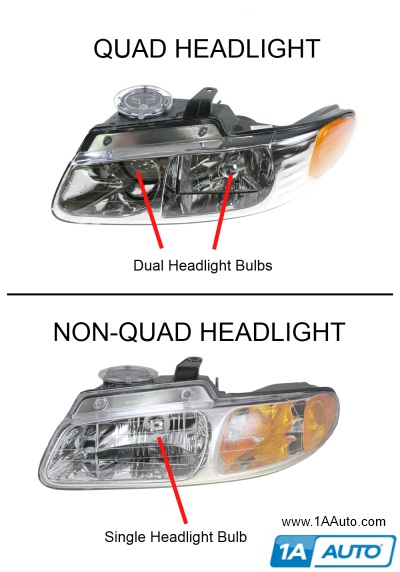
One of the more common questions about headlights that we receive is "what is the difference between quad and non-quad headlights?" Luckily, it sounds far more confusing than it really is. The "quad" headlights have two headlight bulbs per headlight. The "non-quad" headlights have just one headlight bulb per headlight.
If your vehicle came with quad headlights, your only replacement option is quad-style headlights if you need to change them.
The same goes for non-quad headlights—your only option is non-quad headlights if you need to replace them.
The two styles are not interchangeable because the headlight wiring on the vehicle will not match up to the opposite style.
How Do I Know If I Have Quad or Non-Quad Headlights?
If, by chance, some masked bandit took off with both of your headlights, and you are only left with the wiring to figure out if you have quad or non-quad headlights, there is still hope. The quad headlights have two headlight bulbs each—one for the low beam and one high beam bulb. The quad-style headlights will have two headlight bulb connectors each, and each connector will have two wires going to it. The non-quad headlights only have one headlight bulb which is the high beam and low beam. That means that there will be just one headlight bulb connector with three wires going into it.Need New Headlights?
We have thousands of installation videos for guidance, we have competitive prices, and thousands of replacement headlights in stock at all times across the country.
Replace your headlights yourself with how-to videos for many years, makes, and models in our how-to video library.
